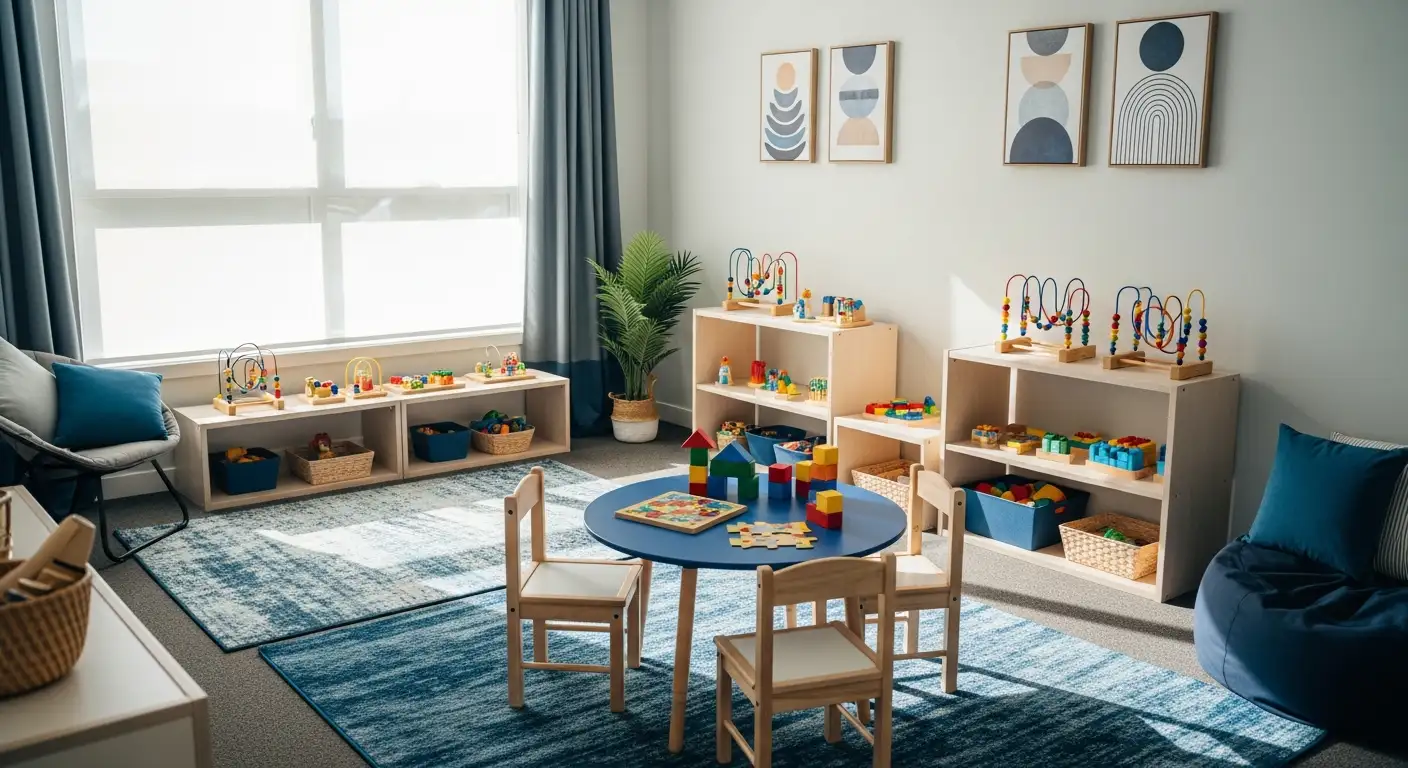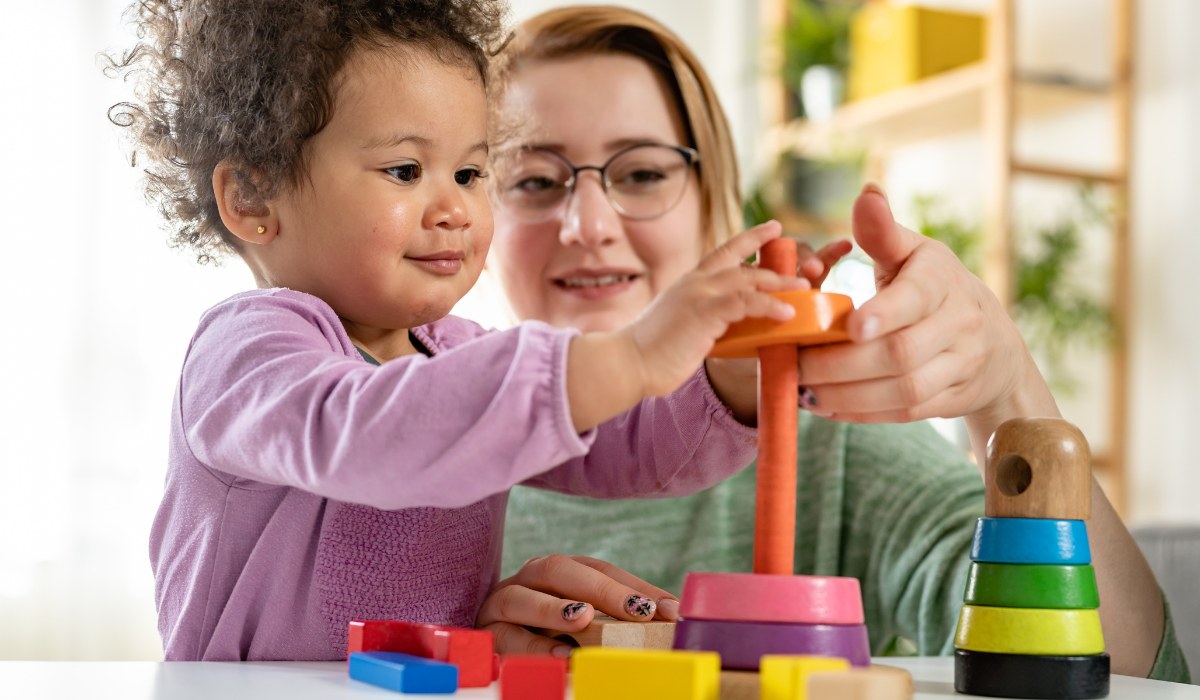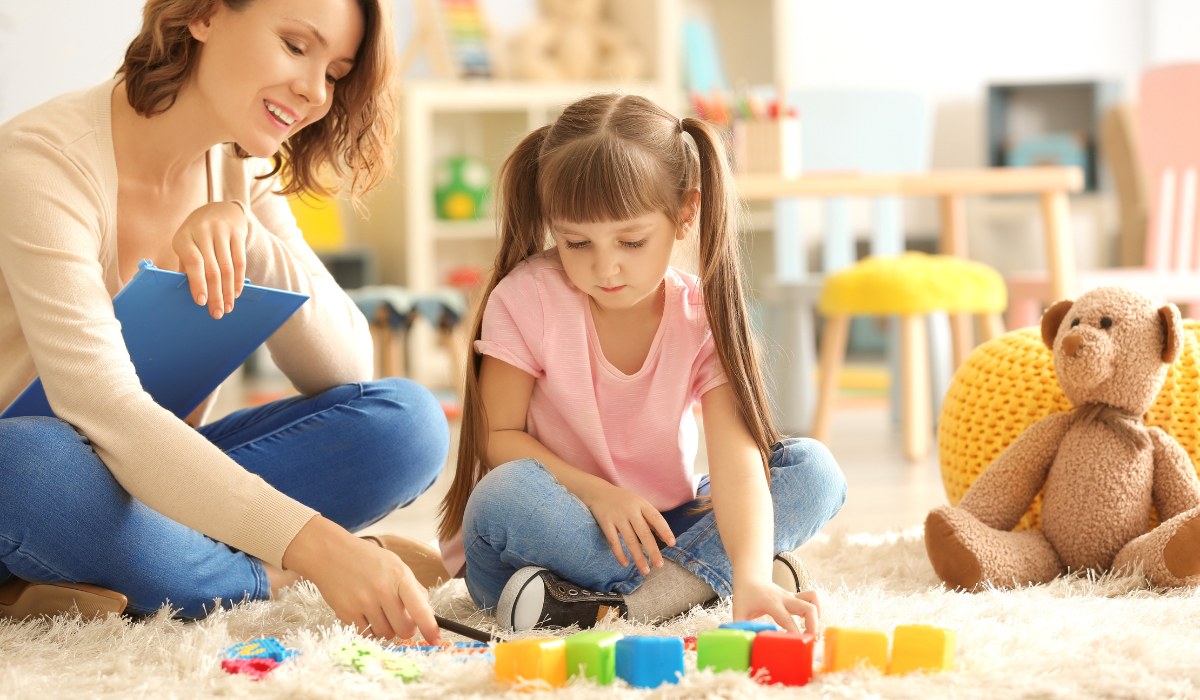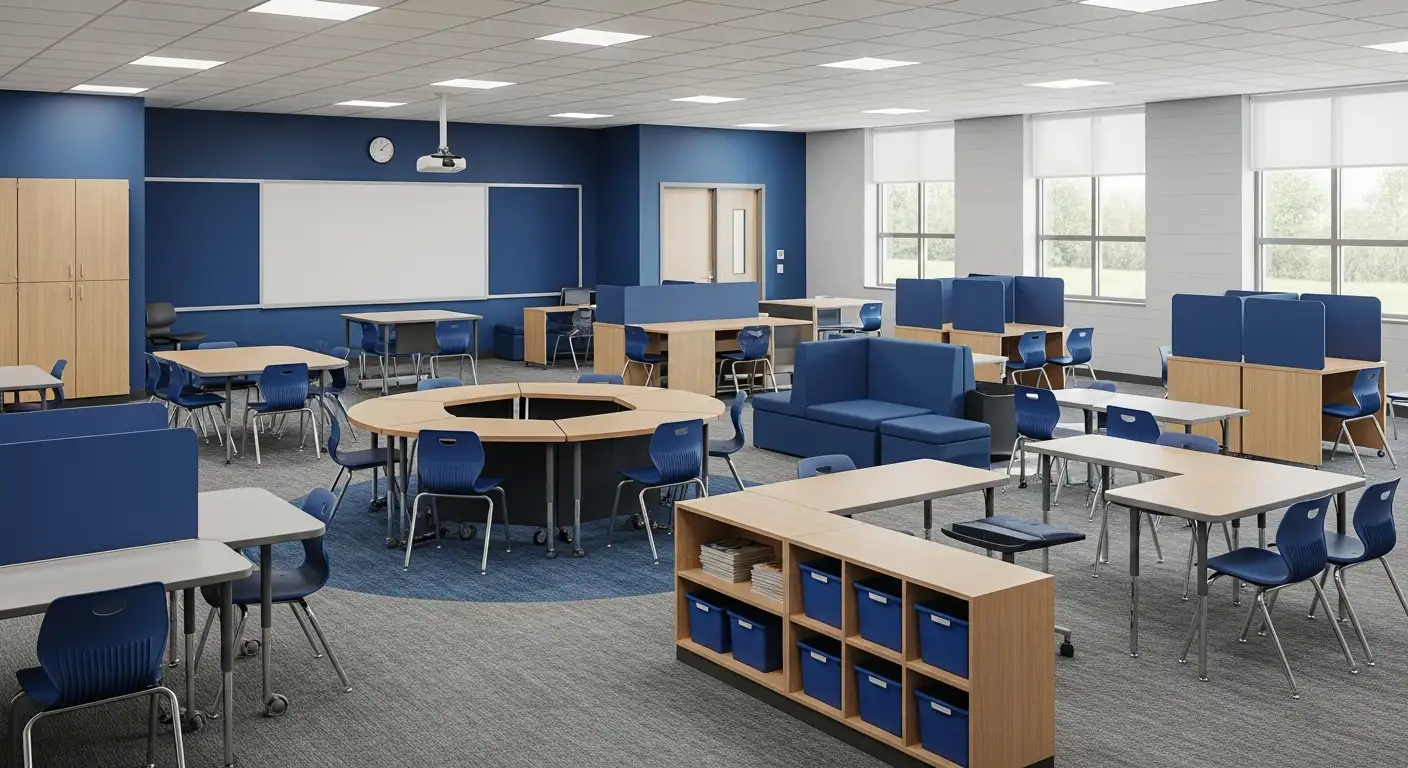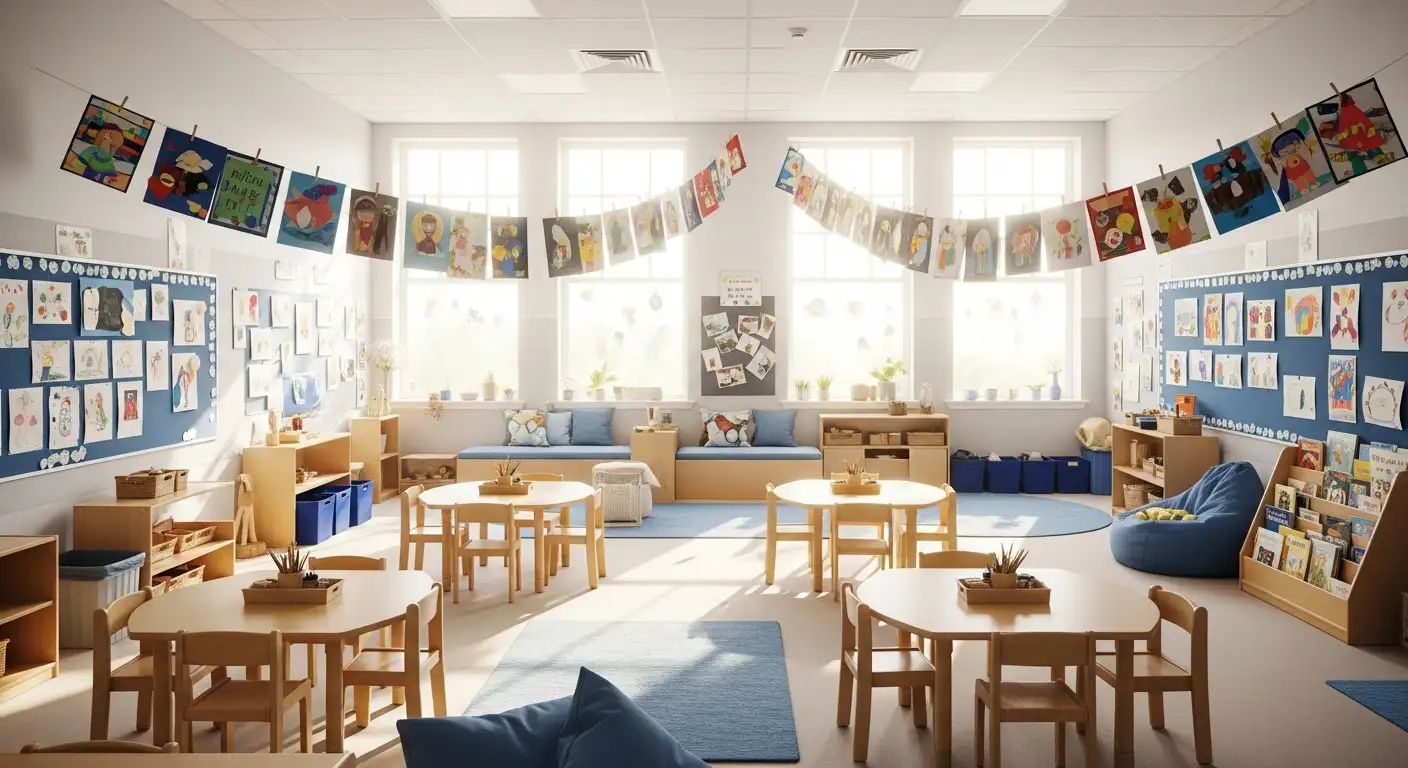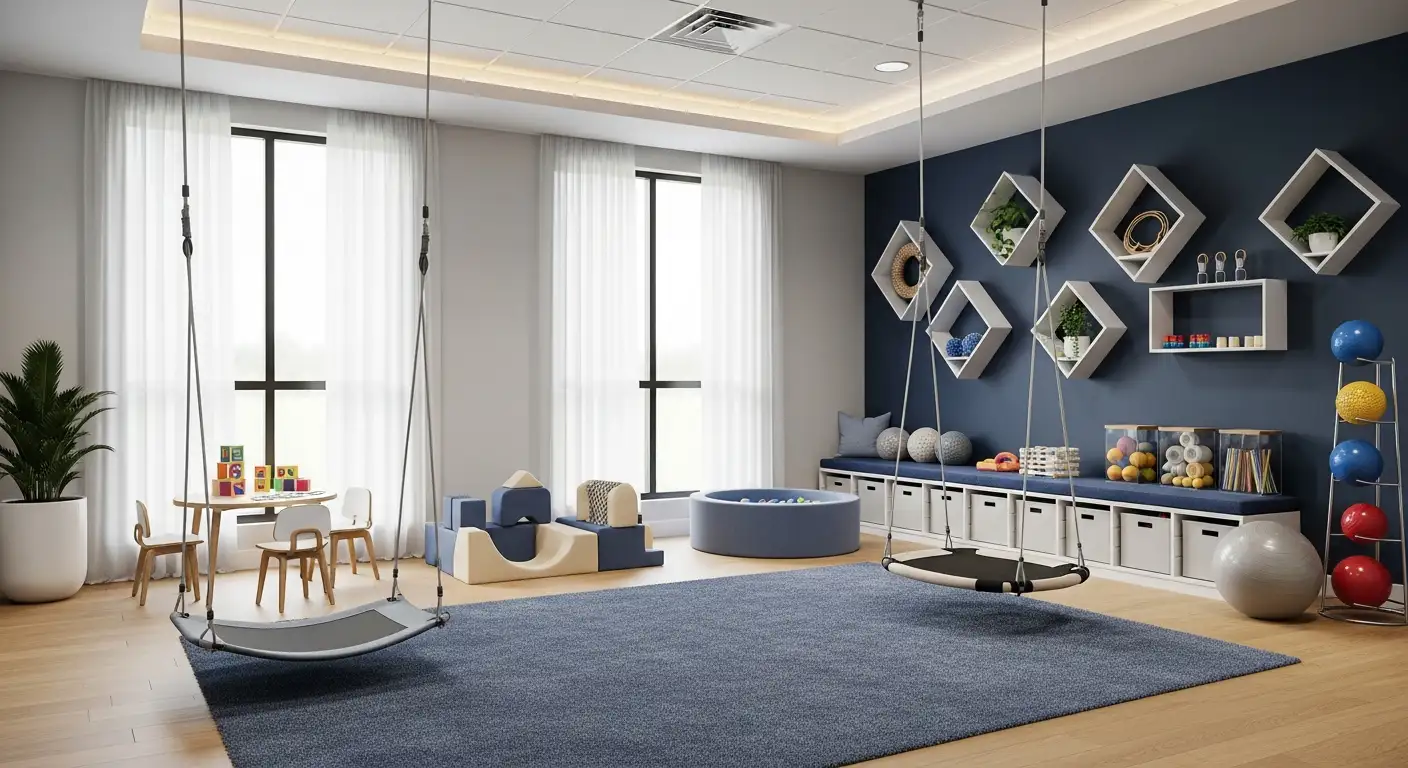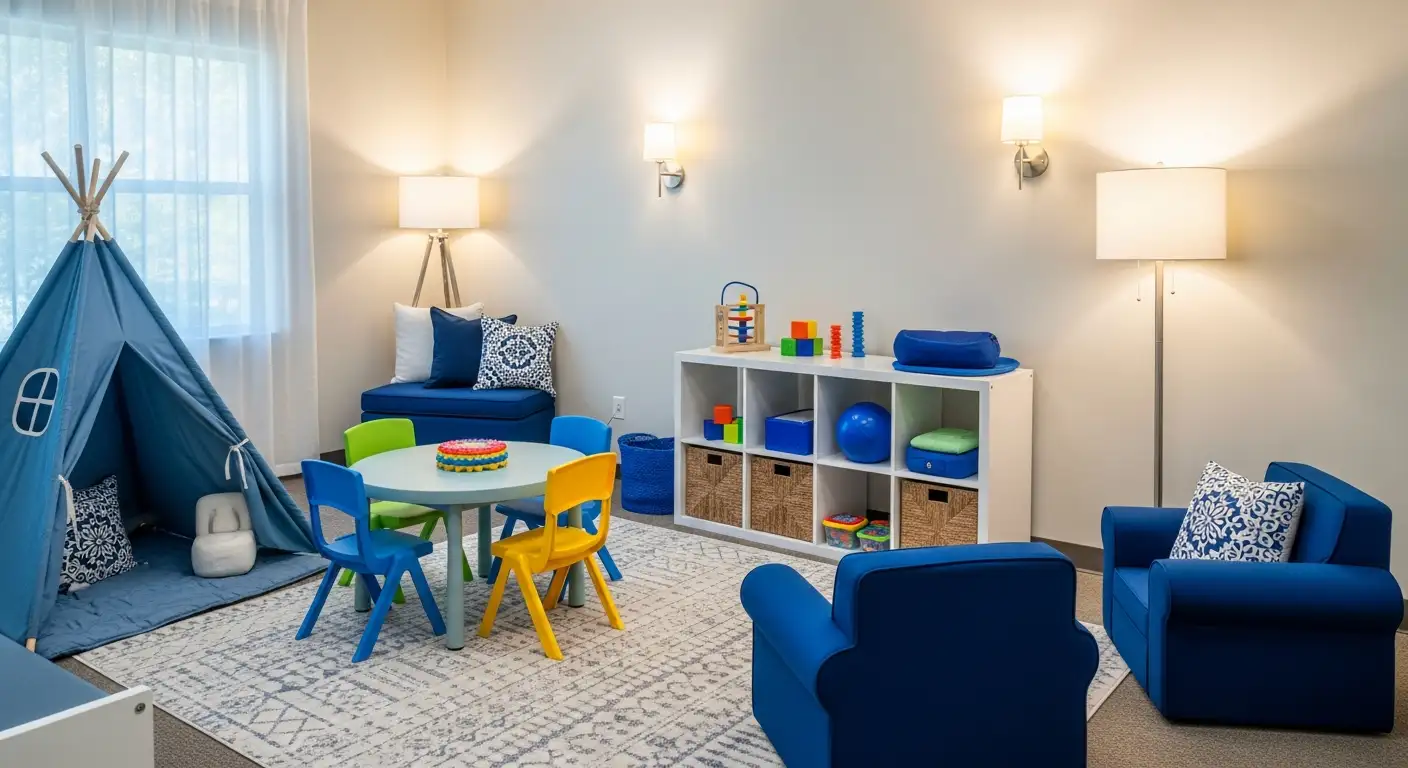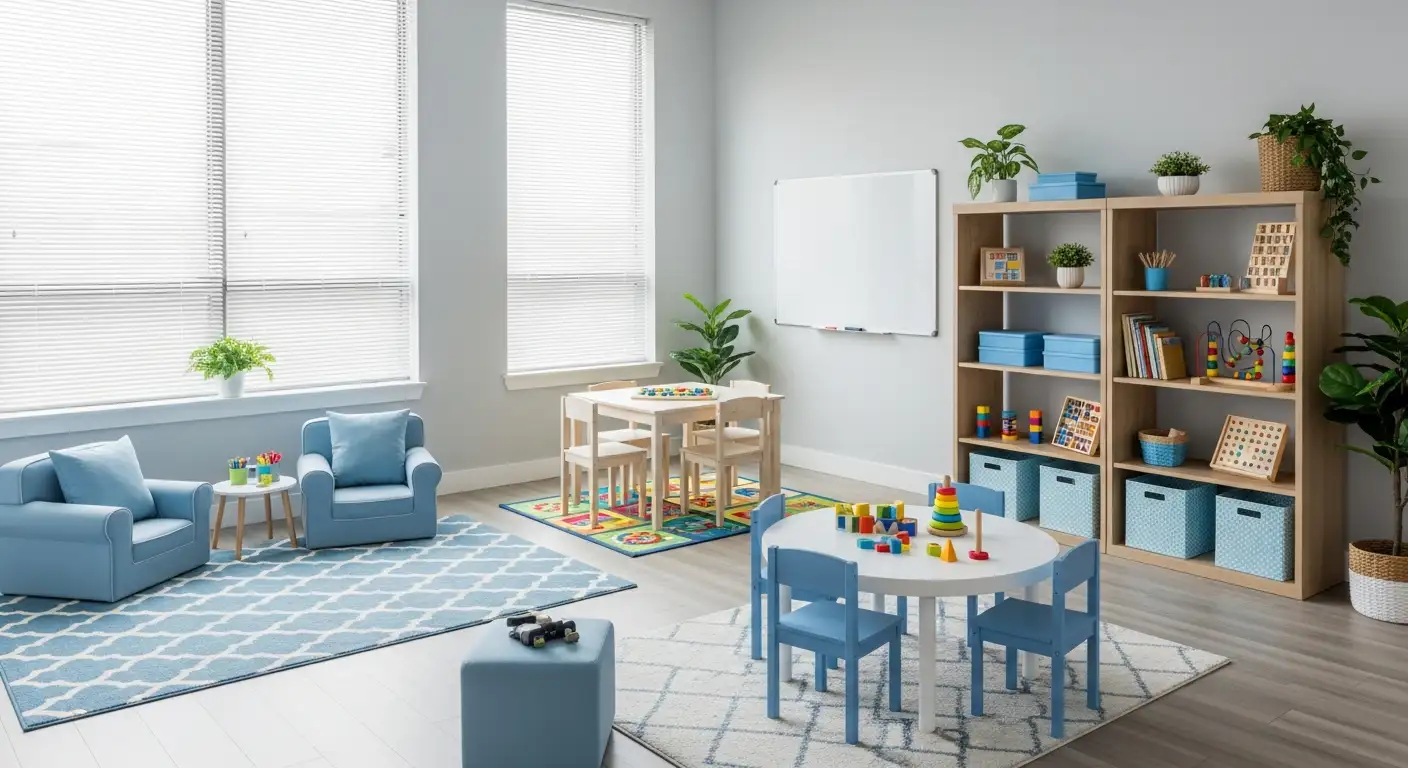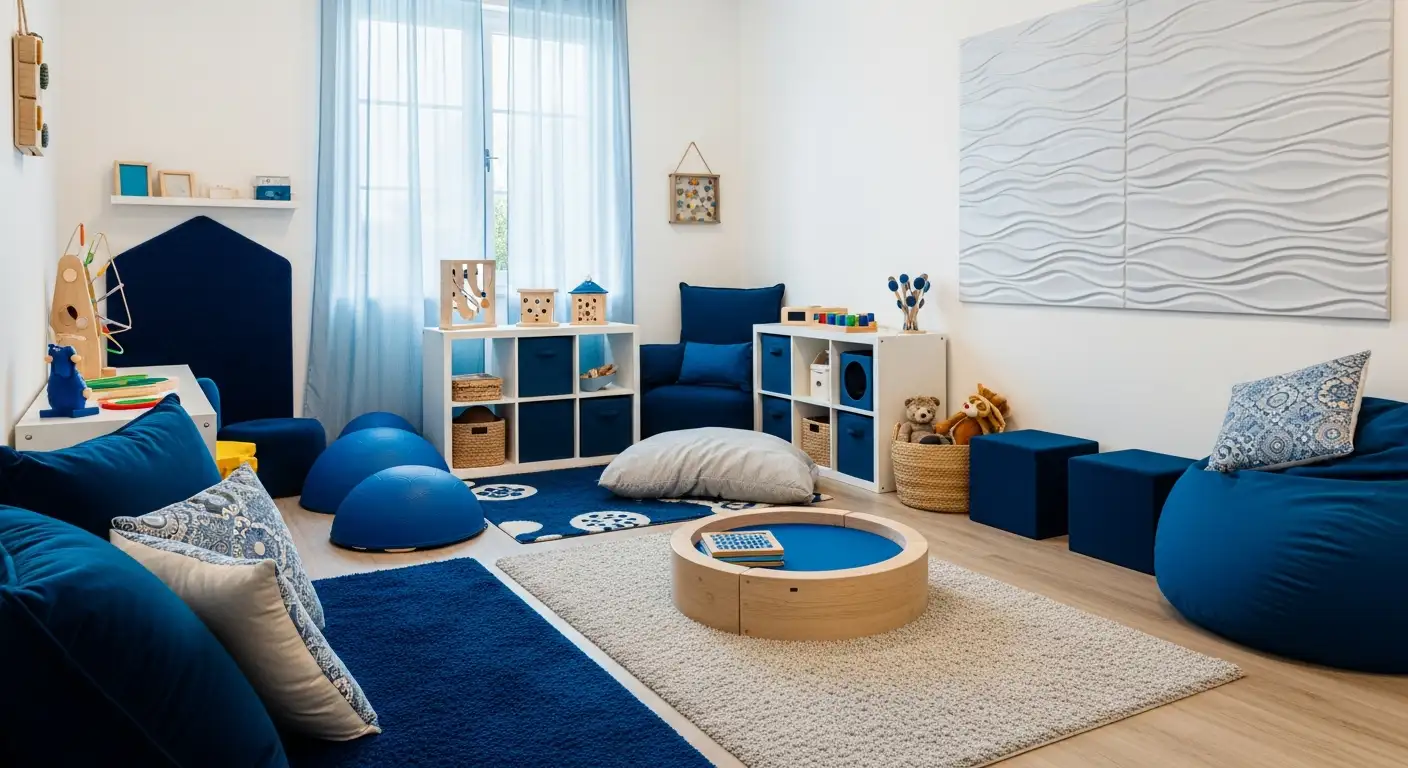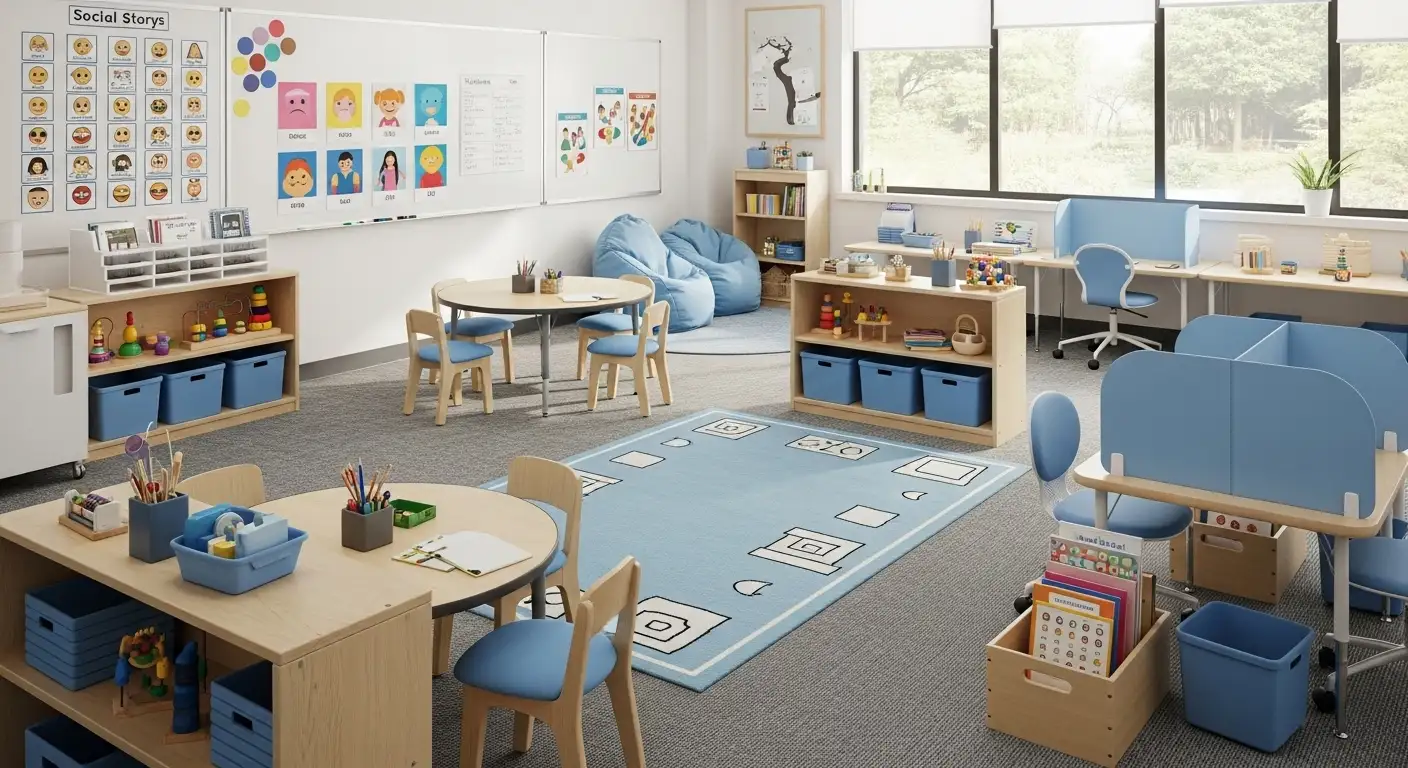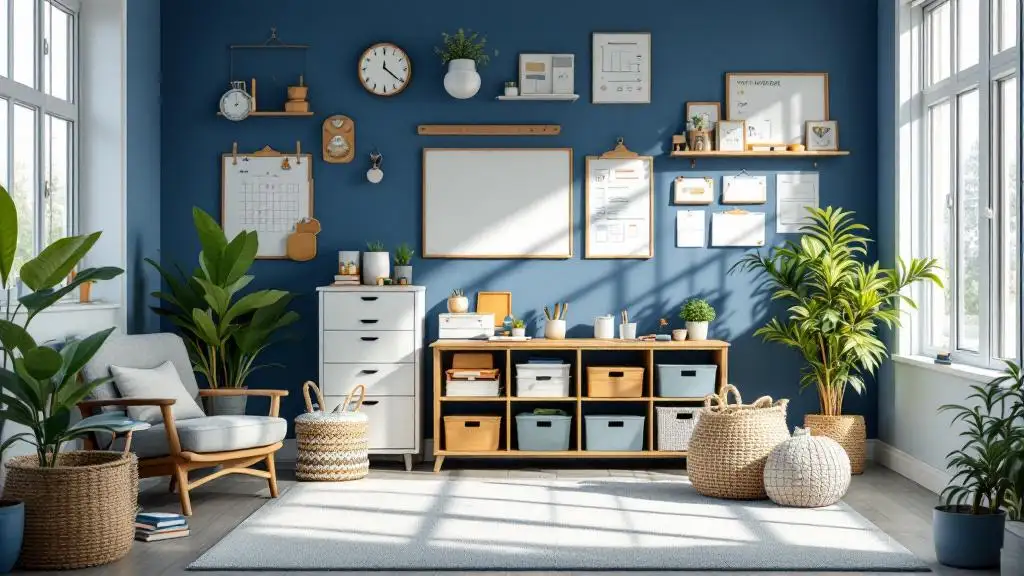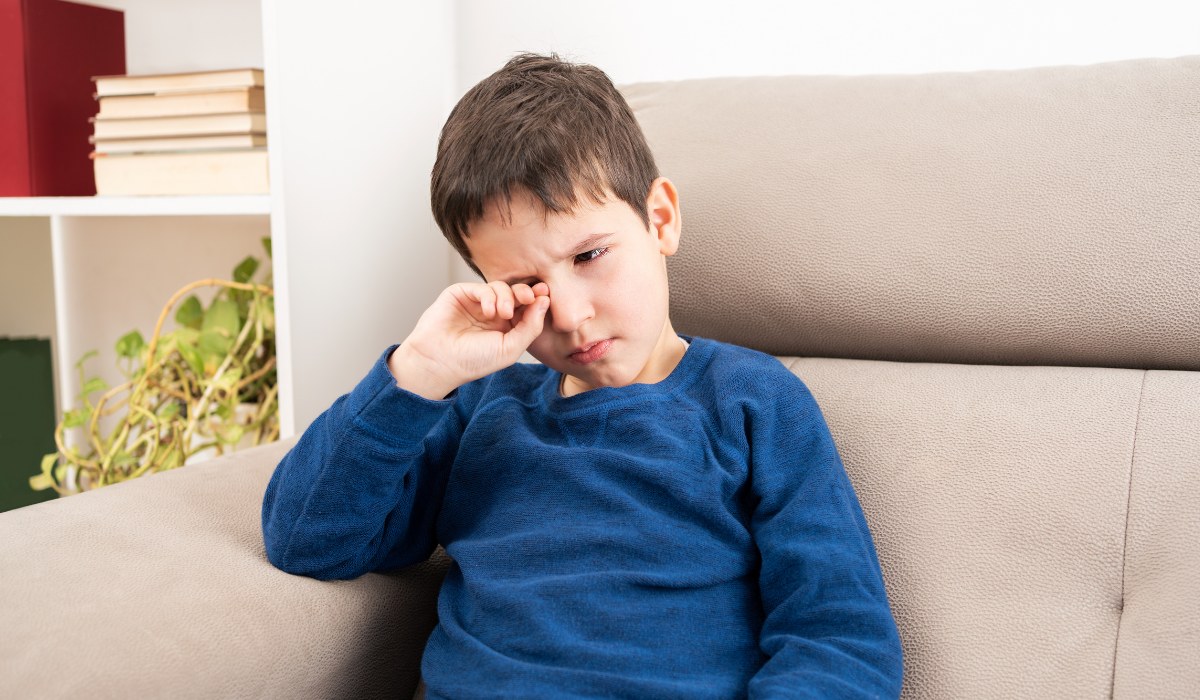Using Sensory Breaks to Help Children with Autism
Supporting Sensory Needs in Autism Through ABA Therapy

Understanding Sensory Challenges in Autism
Sensory sensitivities affect a majority of children with autism spectrum disorder, influencing how they perceive and interact with the world. These sensory issues can lead to discomfort, emotional distress, and behavioral challenges, making daily activities and social participation difficult. Applied Behavior Analysis (ABA) therapy incorporates specialized sensory strategies, such as sensory breaks, to help children manage these sensitivities effectively. This article explores how ABA therapy uses sensory breaks to support children with autism, emphasizing targeted techniques and tailored interventions that foster emotional regulation, communication, and overall well-being.
What is Applied Behavior Analysis (ABA) Therapy and Its Role in Autism Treatment?

What is applied behavior analysis (ABA) therapy and how is it used in the treatment of autism?
Applied Behavior Analysis (ABA) therapy is a scientifically grounded method to support individuals with autism spectrum disorder (ASD). Rooted in the principles of learning and behavior, ABA focuses on understanding and shaping behaviors by analyzing the sequence of events surrounding them. This is done through the Antecedent-Behavior-Consequence (ABC) model, where therapists observe what triggers a behavior, the behavior itself, and the consequences that follow.
Therapeutic methods in ABA include positive reinforcement, which encourages desirable behaviors by rewarding them, and structured teaching techniques such as Discrete Trial Training (DTT) and Pivotal Response Treatment (PRT). These approaches build skills in communication, social interaction, and daily living, while also addressing behaviors that may hinder functioning.
The main goals of ABA are to enhance meaningful skills and reduce behaviors that interfere with learning or social participation. Therapy programs are individualized to meet each child's unique needs and are typically provided by qualified professionals like Board Certified Behavior Analysts (BCBAs). Interventions can take place in homes, clinics, schools, or community settings, ensuring flexibility and consistency.
Robust scientific evidence supports ABA’s effectiveness, particularly as an early intervention. Landmark studies have demonstrated significant improvements in communication, social engagement, and adaptive behaviors when ABA is applied consistently. This evidence underscores its role as a cornerstone therapy for children with ASD, helping them reach their full potential.
Sensory Sensitivities in Children with Autism: An Overview

What Are Common Sensory Issues in Autism?
Children with autism often experience sensory sensitivities that affect how they perceive and interact with their environment. These sensitivities generally fall into two categories: hypersensitivity and sensory seeking. Hypersensitivity means a child may be overly sensitive to stimuli such as loud noises, bright lights, or certain textures. On the other hand, sensory seeking involves actively looking for sensory input through activities involving movement or touch.
How Do Sensory Sensitivities Affect Interactions and Behavior?
These sensory challenges shape how children engage with others and their surroundings. Hypersensitivity can lead to withdrawal or distress in overwhelming environments, while sensory seeking may result in behaviors aimed at fulfilling sensory needs, sometimes appearing unconventional to others. Such difficulties can influence social participation and learning opportunities.
What Are the Signs of Sensory Overload and Behavioral Cues?
Sensory overload occurs when sensory input exceeds a child's ability to process it comfortably, causing stress and anxiety. Physical signs include covering ears, rubbing eyes, or avoiding certain stimuli. Emotional outbursts like irritability or sudden withdrawal from activities also signal overload. Recognizing these signs helps in providing timely support.
What Are Typical Sensory Behaviors for Self-Regulation?
Children often use repetitive behaviors to manage their sensory experiences. Rocking, hand-flapping, and other repetitive movements serve as coping mechanisms to self-regulate and deal with sensory discomfort. These behaviors reflect their individual sensory preferences and are important in understanding their needs.
These sensory sensitivities are crucial considerations in therapies such as ABA, which use specialized strategies to support children’s sensory processing and improve their daily functioning.
How ABA Therapy Addresses Sensory Sensitivities

ABA techniques targeting sensory issues
ABA therapy utilizes specialized methods to help children manage sensory sensitivities associated with autism. Therapists incorporate sensory breaks, clear routines, and sensory-friendly activities into interventions to reduce discomfort from sensory overload. These strategies support emotional regulation by teaching calming signs and words, thereby improving communication and social participation.
Incorporation of sensory integration and desensitization protocols
A central component of ABA therapy is sensory integration, which uses controlled exposure activities such as obstacle courses and tactile play to improve sensory processing. Desensitization protocols gradually help children tolerate sensory stimuli like loud sounds or bright lights, fostering adaptive responses within daily routines.
Role of controlled sensory exposure and positive reinforcement
Through systematic, controlled exposure to targeted sensory inputs, ABA therapy helps children develop coping skills and reduce anxiety linked to sensory triggers. Positive reinforcement encourages desirable behaviors and supports the acquisition of better sensory modulation, enabling children to better tolerate and respond to their environments.
Tailoring interventions based on sensory preferences and sensitivities
ABA therapists carefully observe each child's unique sensory preferences and sensitivities to customize interventions. Incorporating sensory-friendly materials and modifying environments with calming elements such as soft lighting and weighted blankets create supportive settings conducive to learning and participation.
These personalized strategies, combined with collaboration with families, facilitate effective sensory management and enhance overall developmental outcomes for children with autism.
The Use and Benefits of Sensory Breaks within ABA Therapy

What Are Sensory Breaks and Their Purpose?
Sensory breaks are designated periods during which children with autism engage in activities tailored to their sensory preferences and sensitivities. These breaks typically include movements or tactile experiences such as pushing, pulling, stretching, or exploring different textures. The purpose of sensory breaks is to help children better manage sensory input and prevent sensory overload, which occurs when the brain receives more sensory information than it can process effectively.
How Do Sensory Breaks Help Reduce Sensory Overload?
Sensory overload can trigger stress, anxiety, and behavioral challenges in children with autism. Sensory breaks provide controlled sensory input that helps balance the sensory load. By incorporating tools like weighted lap pads, fidget toys, or quiet spaces, sensory breaks reduce the intensity of overwhelming stimuli. This targeted sensory input helps to calm the nervous system, allowing children to regain focus and participate more comfortably in daily activities.
Emotional Regulation and Behavior Improvement Through Sensory Breaks
Regular sensory breaks promote emotional regulation by giving children opportunities to self-soothe and manage their sensory needs before frustration builds. This reduces behavioral issues linked to sensory overload such as irritability or withdrawal. Tailored sensory breaks also improve focus and participation in social or learning environments, supporting progress in communication and social skills.
What Are the Types of Sensory Breaks?
There are three primary types of sensory breaks used in ABA therapy, each targeting different sensory systems:
| Type | Description | Examples of Activities |
|---|---|---|
| Proprioceptive | Involves deep pressure or heavy work to promote relaxation and body awareness | Carrying weighted objects, push/pull exercises, deep pressure hugs |
| Vestibular | Regulates balance and spatial orientation | Swinging, rocking, balance exercises |
| Tactile | Addresses sensitivities to touch and texture | Finger painting, playing with sensory bins, exploring various textures |
These sensory breaks are adapted to individual needs and integrated into routines at home or school to maximize their benefits.
Types of Sensory Break Activities and Their Therapeutic Roles
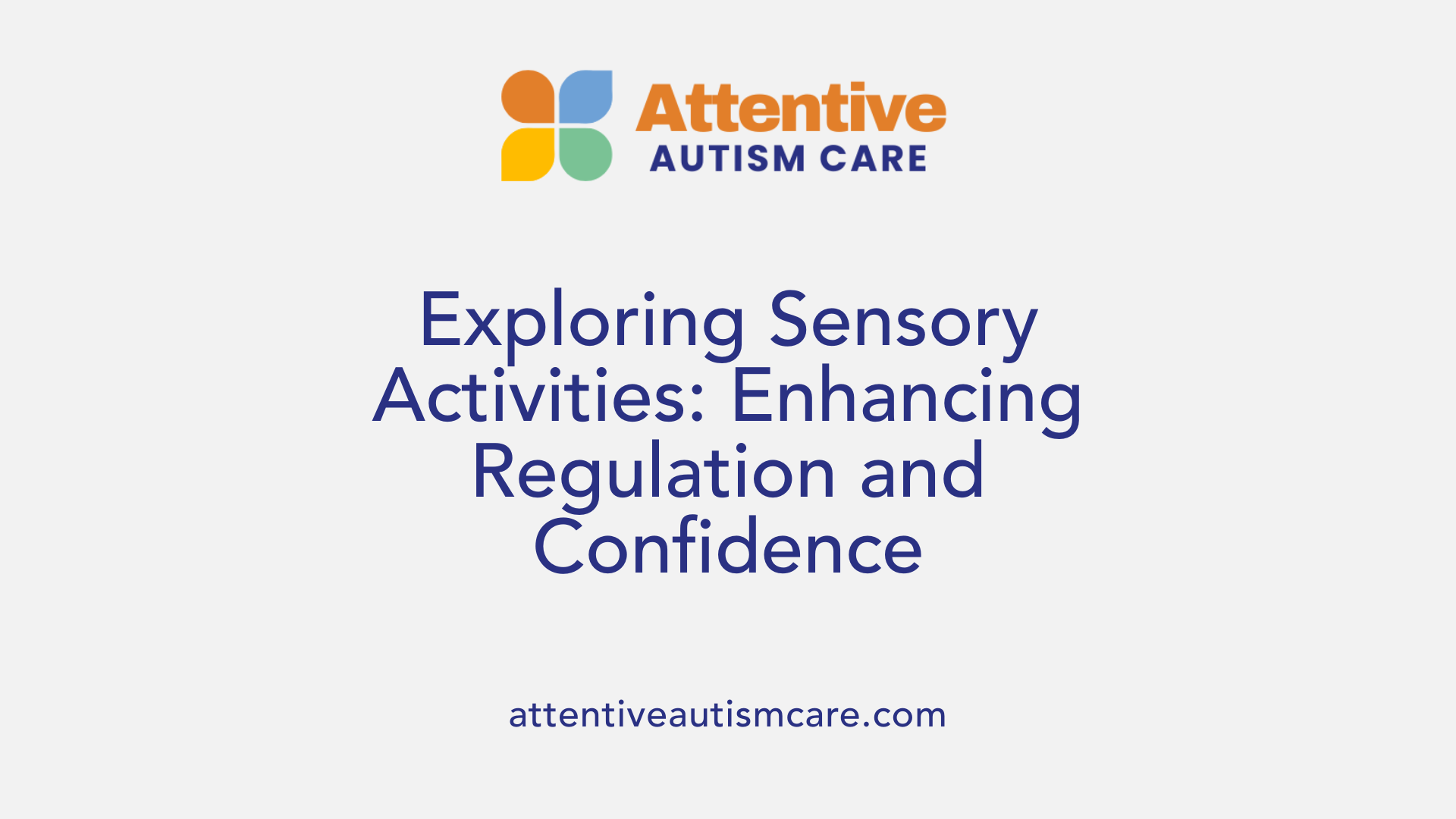
Examples of sensory break activities — swinging, yoga, tactile toys, sensory bins
Sensory break activities for children with autism include engaging options such as swinging, yoga, tactile toys, and sensory bins. Swinging helps regulate vestibular input by providing controlled movement, while yoga promotes body awareness and calming through gentle poses and breathing. Tactile toys and sensory bins offer varied textures that support tactile sensory exploration, making these activities both enjoyable and therapeutic.
How activities are matched to sensory system needs
Activities are carefully matched to target specific sensory systems. For instance, proprioceptive sensory breaks—such as heavy work or deep pressure tasks—involve pushing, pulling, or stretching to enhance body awareness and reduce anxiety. Vestibular activities like swinging or spinning assist with balance and spatial orientation, while tactile activities expose children to different touch sensations to improve sensory tolerance.
Effective use of proprioceptive, vestibular, and tactile sensory inputs
Proprioceptive inputs are effective in promoting relaxation and focus by engaging muscles and joints through activities like carrying weighted objects or using resistance bands. Vestibular inputs help regulate movement and prevent overstimulation via controlled spinning or rocking motions. Tactile inputs, through varied textures and tactile play, improve sensory processing and decrease aversions. Combining these inputs during breaks fosters balanced sensory regulation.
Sensory-based play supporting skill development and confidence
Incorporating sensory play into therapy encourages children to meet their sensory needs in a playful, low-pressure environment. This approach builds new skills like coordination and emotional regulation, while simultaneously enhancing self-confidence. Activities such as finger painting and water play not only support sensory integration but also motivate participation and enjoyment, making developmental progress feel natural and affirming.
Creating Sensory-Friendly Environments to Support Therapy
Identifying and Minimizing Sensory Triggers
Creating a sensory-friendly environment begins with recognizing each child's specific sensory sensitivities. Common triggers include loud noises, bright or flickering lights, and certain textures or crowded spaces. By observing behavioral and physical cues—like covering ears, rubbing eyes, or irritability—caregivers and therapists can pinpoint these triggers to reduce sensory overload.
Environmental Modifications
Adjusting the surroundings plays a critical role in managing sensory input. Incorporating noise-canceling headphones helps reduce overwhelming sounds, while soft, dim lighting creates a calming visual atmosphere. Quiet spaces with minimal stimuli provide important refuges where children can recover from heightened sensory experiences.
Calming Elements: Weighted Blankets and Tactile Materials
Adding calming tactile materials enhances comfort and sensory regulation. Weighted blankets deliver gentle, deep pressure that can ease anxiety and promote relaxation. Activities involving tactile play—such as water play, kinetic sand, finger painting, and sensory bins—offer enjoyable ways to meet sensory needs while developing new skills.
Benefits Across Different Settings
Sensory-friendly environments support better emotional regulation, focus, and participation in daily routines. At home, these adjustments help children manage sensory challenges consistently. In school and therapy settings, such environments foster engagement and improve learning outcomes. Integrating sensory considerations into all settings encourages smoother transitions and strengthens overall coping strategies for children with autism.
The Importance of Individualization in Sensory Breaks and ABA Interventions
Assessing individual sensory profiles and preferences
Effective sensory interventions begin with understanding each child's unique sensory sensitivities and preferences. ABA therapists carefully observe behaviors such as avoidance, seeking, or coping mechanisms like rocking or hand-flapping to identify triggers and preferred stimuli. This assessment guides the selection of sensory strategies that best suit the child's needs, ensuring interventions are neither overwhelming nor insufficient.
Adjusting sensory breaks for different ages and abilities
Sensory breaks should be tailored to accommodate developmental stages and individual abilities. For younger children or those with limited communication skills, simple tactile activities like finger painting or sensory bins might be more appropriate. Older children may benefit more from proprioceptive or vestibular activities such as yoga or obstacle courses. By adjusting activities, therapists help children stay engaged and effectively regulate sensory input.
Continuous observation and flexibility in intervention planning
Sensory sensitivities can evolve, so ongoing monitoring is critical. ABA therapists regularly evaluate how a child responds to sensory strategies and make timely adjustments to maximize benefit. This flexibility helps prevent sensory overload and maintains motivation, promoting better emotional regulation and participation in learning or social situations.
Collaborating with families to personalize sensory strategies
Partnerships with caregivers are fundamental for reinforcing sensory interventions beyond therapy sessions. Families are coached to recognize sensory overload signs and to implement sensory breaks using familiar tools like weighted blankets or quiet spaces. This collaborative approach fosters consistency and supports generalization of coping skills across home, school, and community settings.
Integrating Sensory Breaks into Home and Educational Routines
Scheduling Regular Short and Longer Sensory Breaks
Sensory breaks are brief, targeted opportunities to help children with autism manage sensory input effectively. Short breaks lasting 3-5 minutes can be scheduled during classroom activities to provide quick relief from sensory stimuli. Longer breaks, typically 5-15 minutes, are especially beneficial after intense or overwhelming situations to help the child regain calm and focus. These breaks are ideally spaced every 30-90 minutes during high-demand tasks, balancing sensory regulation and engagement.
Incorporation of Sensory Breaks During Classroom Activities
In educational settings, sensory breaks can be seamlessly integrated into daily routines. Activities such as proprioceptive exercises (e.g., pushing or pulling heavy objects), vestibular activities (e.g., swinging or gentle spinning), and tactile experiences (e.g., exploring textured materials) are chosen based on the child's individual sensory profile. Tools like weighted lap pads, fidget toys, and quiet corners enhance the sensory break environment to effectively reduce overstimulation.
How Sensory Breaks Enhance Focus, Participation, and Resilience
Regular sensory breaks play a vital role in reducing sensory overload, which is often linked to stress and behavioral challenges. By lessening overstimulation, these breaks improve the child's ability to focus, engage actively in group activities, and regulate emotions. Over time, consistent sensory management builds resilience, helping children navigate varied sensory environments more comfortably and confidently.
Role of Caregivers and Educators in Supporting Sensory Needs
Caregivers and educators are essential partners in reinforcing sensory strategies outside of therapy sessions. Collaboration ensures that sensory breaks are personalized and consistently applied at home and school. Training and ongoing communication enable adults to recognize behavioral cues such as irritability or withdrawal signaling sensory overload. This insight supports timely and effective sensory interventions, fostering better emotional regulation and learning outcomes.
Collaboration between ABA Therapists, Families, and Educators
Importance of communication among caregivers and therapists
Effective ABA therapy relies heavily on open, ongoing communication between therapists, families, and educators. This ensures everyone has a clear understanding of the child's sensory sensitivities, preferences, and behavioral goals. Regular updates and feedback help tailor interventions to the child’s evolving needs and maintain consistency in addressing sensory challenges.
Training families to use sensory strategies consistently
ABA therapists provide training to families to implement sensory strategies such as sensory breaks and environmental modifications at home. This consistent use supports emotional regulation and helps children manage sensory overload outside clinical settings. Caregivers learn how to recognize sensory triggers and use tools like weighted blankets, fidget toys, and calming routines effectively.
Supporting generalization of skills across settings
Generalization is critical so children can apply coping skills in various environments. Therapists collaborate closely with educators and caregivers to embed strategies into daily routines, school activities, and social settings. This teamwork helps children become more adaptive and resilient, improving participation in group activities and social communication.
Role of teamwork in addressing evolving sensory and behavioral needs
Sensory and behavioral needs often change as children grow. A collaborative team approach allows for flexibility in interventions and ongoing assessment. ABA providers work alongside families and schools to adjust techniques like sensory integration exercises, desensitization protocols, and positive reinforcement as needed. This ensures comprehensive support that evolves with the child's development.
| Aspect | Description | Benefits |
|---|---|---|
| Communication | Continuous information exchange among therapists, families, and educators | Tailored interventions and consistency |
| Family Training | Teaching caregivers to apply sensory strategies and recognize triggers | Improved emotional regulation and management at home |
| Skill Generalization | Applying techniques across settings including school and social environments | Enhanced adaptability and social participation |
| Teamwork and Flexibility | Joint efforts to modify interventions as the child's needs evolve | Sustained progress and individualized support |
Through this collaborative effort, ABA therapy maximizes its effectiveness, helping children with autism thrive amid sensory challenges in all areas of life.
Scientific Support for ABA Therapy's Sensory and Behavioral Outcomes
What are the main benefits and goals of ABA therapy for people with autism?
ABA therapy focuses on promoting positive behaviors such as improving communication, social skills, and independence, while reducing behaviors that hinder learning and social engagement. Its primary objectives include enhancing language abilities, daily living skills, and social interaction, which collectively aim to boost overall quality of life for individuals with autism.
Research validating ABA as an effective intervention
Scientific studies have consistently validated ABA therapy as an effective treatment for autism spectrum disorder. Landmark research by Lovaas (1987) and Eldevik et al. (2009) demonstrates that early intensive behavioral interventions based on ABA principles can lead to substantial developmental improvements. These studies emphasize the importance of early and consistent application of ABA strategies to achieve meaningful behavioral changes.
Evidence of improvements in communication, social skills, and behavior
ABA interventions have been shown to enhance communication skills by teaching children effective ways to express their needs and emotions. Social skills are improved through structured activities that encourage interaction and cooperation, while behavioral challenges are reduced by employing positive reinforcement to encourage desirable actions. This facilitates greater participation in social settings and educational environments.
Specific findings on sensory integration and emotional regulation
ABA therapy incorporates sensory integration techniques and sensory-friendly strategies to help children better tolerate and respond to sensory stimuli. Controlled exposure, sensory breaks, and environmental modifications support emotional regulation, reducing stress and behavioral issues related to sensory overload. This holistic approach helps children manage sensory sensitivities, leading to increased focus and calmer responses to their surroundings.
Long-term developmental gains through early intensive ABA therapy
Early intensive ABA therapy contributes to long-lasting developmental gains, including improved academic performance and enhanced social participation. By fostering adaptive behaviors and promoting skill generalization across settings, this therapy empowers individuals with autism to achieve greater independence and engage more meaningfully with their communities. The combination of behavioral and sensory-focused interventions under ABA creates a supportive foundation for continued growth throughout childhood and beyond.
Practical Recommendations for Implementing Sensory Breaks in ABA Programs
Timing and Duration Guidelines for Sensory Breaks
Sensory breaks should be integrated thoughtfully into children's routines, with short breaks lasting 3-5 minutes during classroom activities and longer breaks between 5-15 minutes after more intense or overwhelming situations. These breaks are ideally spaced between 30 to 90 minutes during periods of high demand to help manage sensory overload and sustain attention.
Use of Tools Like Weighted Lap Pads, Fidget Toys, and Trampolines
Incorporating sensory tools such as weighted lap pads, fidget toys, and trampolines enhances the effectiveness of sensory breaks. These tools offer proprioceptive and tactile input tailored to individual needs, promoting relaxation, focus, and improved body awareness. Selecting appropriate tools depends on the child's sensory preferences and required sensory input types.
Monitoring Effectiveness and Adjusting Sensory Strategies
Continual assessment of how sensory breaks impact behaviors and regulation is crucial. Tracking physical and emotional cues, such as covering ears or withdrawal, enables therapists and caregivers to adjust strategies dynamically. Customizing the type, timing, and intensity of sensory activities ensures they remain responsive to evolving needs.
Emphasizing Continual Learning and Adaptation by Therapists
ABA therapists must maintain flexibility and ongoing learning to adapt sensory interventions effectively. Engaging in regular collaboration with families supports consistent implementation across environments, enhancing generalization of sensory regulation skills. This adaptive approach allows for tailoring interventions as the child grows and their sensory processing evolves.
Looking Ahead: Enhancing Sensory Support through ABA Therapy
Emerging Trends in Sensory-Focused ABA Interventions
ABA therapy continues to evolve with a growing emphasis on sensory support tailored specifically for children with autism. New interventions increasingly combine sensory integration techniques with behavior analysis to create personalized strategies. These approaches focus on understanding individual sensory preferences and sensitivities to boost engagement and skill development.
Innovations in Sensory Integration Techniques
Recent advances include the use of technology and novel sensory tools that facilitate controlled sensory exposure. For example, interactive sensory play involving tactile bins, water activities, and proprioceptive exercises are being integrated more frequently into daily routines. These techniques are designed to enhance adaptive responses while maintaining the child's comfort and emotional regulation.
Expanding Caregiver and Educator Training
A critical trend is expanding education for caregivers and educators to implement sensory strategies consistently across environments. Training focuses on recognizing sensory triggers, administering effective sensory breaks, and modifying environments with calming elements such as weighted blankets and soft lighting. This collaborative approach helps generalize skills learned in therapy to home and school, leading to better outcomes.
Importance of Ongoing Research and Flexible Approaches
Continued scientific research highlights the need for flexible, individualized ABA plans that adapt as children grow and their sensory needs evolve. Therapists emphasize ongoing assessment, with interventions adjusted based on sensory processing changes and behavioral responses. This ensures lasting support that promotes participation, reduces sensory overload, and fosters emotional well-being.
Together, these advancements and priorities point toward a future where sensory support in ABA therapy is more dynamic, personalized, and impactful for children with autism and their families.
Harnessing Sensory Breaks to Empower Children with Autism
Sensory breaks represent a powerful tool within ABA therapy to help children with autism manage sensory sensitivities that can otherwise hinder learning, social engagement, and emotional well-being. By tailoring sensory interventions to individual needs and embedding them into home, school, and therapy routines, ABA therapy creates supportive environments that promote regulation, skill development, and participation. Collaboration among therapists, families, and educators enhances the consistency and effectiveness of these interventions. Supported by robust research, the integration of sensory breaks and sensory-friendly strategies in ABA continues to unlock greater independence and confidence for children with autism, fostering improved quality of life and broader opportunities for growth.
References
- Can ABA Help with Sensory Issues? Discover the Benefits
- Discover Sensory Benefits of Aba for Those with Autism
- How to Use Sensory Breaks for Children with Autism
- Understanding the Importance of Sensory Breaks for Autism
- Sensory Processing: A Key Aspect of ABA Therapy
- Applied Behavior Analysis (ABA)
- 6 Benefits of ABA Therapy for Children with Autism
- The Top 10 Reasons Children With Autism Deserve ABA
- 5 Benefits Of ABA Therapy For Autism





